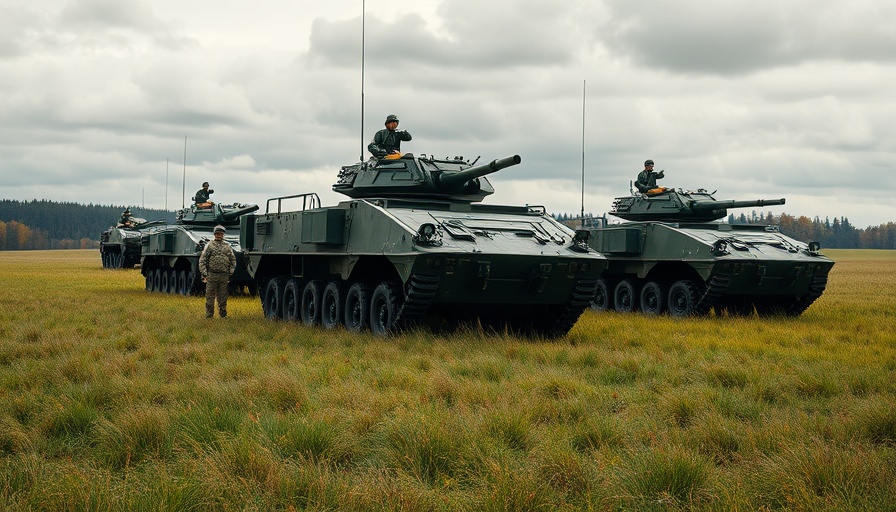
The Crucial Role of Artillery in Ukraine's Defense
The ongoing conflict in Ukraine serves as a stark reminder that, despite technological advancements in warfare, artillery remains paramount. As the war continues, understanding Ukraine's artillery capabilities and the support it receives from allies is essential. While small explosive drones gain visibility, the real backbone of Ukraine's military efforts lies in its artillery. The country faces challenges in maintaining a steady supply of 155-millimeter shells, critical for sustaining defense operations against Russia's advances.
Supply Chain Dynamics: The European Response
With the faltering of U.S. military aid under the current administration, European allies have stepped in to fill the gaps. Nations like the Czech Republic, Estonia, Germany, and Norway have initiated distinct projects aimed at bolstering Ukraine's shell supplies. This effort illustrates a pivot towards collective European action in addressing Ukraine's demands for artillery munitions. Though the U.S. under President Biden previously pumped millions of rounds into Ukraine, the current reality is a pressing need for alternative sources as political shifts alter the landscape of support.
Understanding the Artillery Shortfall
The artillery shortfall is not merely a quantitative issue but speaks volumes about Ukraine's strategic military needs. Experts argue that Ukraine requires around 20,000 shells daily to match the Russian military's 10,000 to 80,000 shells fired each day. However, Ukraine has received enough to fire only 9,000 on the best days. In light of these statistics, the country is hastening its domestic production of munitions. This urgent manufacturing drive, while promising, faces the daunting challenge of wartime conditions that stymie efforts to ramp up production effectively. Reports indicate that Ukraine could start producing 155mm shells domestically by late 2024—months too late to prevent further territorial losses.
Impacts of Political Climate on Military Aid
The political landscape surrounding U.S. military aid has shifted dramatically, which has direct consequences for Ukraine's war efforts. The current administration's stance on aid complicates the supply situation considerably. Observers note that the alignment of U.S. policy with pro-Russian sentiment under Trump has led to an acute slowdown in the flow of essential military supplies. Discussions surrounding U.S. aid must consider not only the immediate need for artillery but also the long-term implications for European security and the integrity of international support for Ukraine.
The Future of Ukraine’s Artillery Systems and Strategies
As the conflict drags on, Ukraine’s reliance on artillery demonstrates the critical need for robust, sustainable munitions production. While European efforts to increase production and supply are underway, these will need consistent backing and collaborative strategies among NATO allies. A well-coordinated response could fortify Ukraine’s military capabilities while deterring future aggression from Russia. Involving public and private sectors could lead to innovative solutions aimed at not just increasing numbers but improving the efficiency and accuracy of artillery fire, which will be vital for any future operations.
 Add Row
Add Row  Add
Add 




Write A Comment